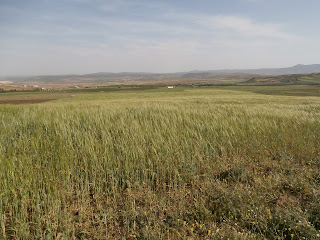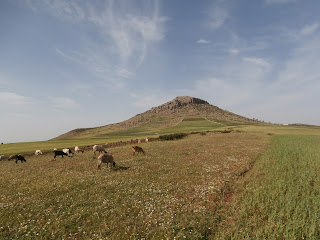Farmland Investment Opportunity in Morocco
Fertile Farmland , not far from FES International airport , on the foothill of the Atlas mountain with Breathtaking Scenery ,
The farm has fertile soil with 3 wells , the land is virgin and is suitable for a fruit trees project , animal farm , an Ecotourism project , an Off Grid retreat , a retirement holiday home , an Investment or all the above .
The Total Surface Area is of 6 Hectares or 14.8 Acres
Google Maps Coordinates : 33°50'48"N 4°54'24"W
The Total Price is 200 000 USD
I am not an agent , I am The Owner
Contact me by Phone : 00212 696975648 or via email : webmaster.khalid@gmail.com
Why Land investment in Morocco
Land values in Morocco are rising rapidly as developers and investors compete to secure development sites. There is significant opportunity for capital growth in land banking alone plus, through our Planning and Building Consultancy , we help clients add even more value to their land by obtaining planning permission for development.
Benefits of land investment in Moroccan:
Morocco has a well-established land registry ensuring secure title to all land plots.
There are no restrictions on foreigners purchasing land which has been zoned for development.
Predicted 20% capital growth per year.
Moroccan Land & Investments will carry out all the necessary due diligence on potential land plots.
Fertile Farmland , not far from FES International airport , on the foothill of the Atlas mountain with Breathtaking Scenery ,
The farm has fertile soil with 3 wells , the land is virgin and is suitable for a fruit trees project , animal farm , an Ecotourism project , an Off Grid retreat , a retirement holiday home , an Investment or all the above .
The Total Surface Area is of 6 Hectares or 14.8 Acres
Google Maps Coordinates : 33°50'48"N 4°54'24"W
The Total Price is 200 000 USD
I am not an agent , I am The Owner
Contact me by Phone : 00212 696975648 or via email : webmaster.khalid@gmail.com
Why Land investment in Morocco
Land values in Morocco are rising rapidly as developers and investors compete to secure development sites. There is significant opportunity for capital growth in land banking alone plus, through our Planning and Building Consultancy , we help clients add even more value to their land by obtaining planning permission for development.
Benefits of land investment in Moroccan:
Morocco has a well-established land registry ensuring secure title to all land plots.
There are no restrictions on foreigners purchasing land which has been zoned for development.
Predicted 20% capital growth per year.
Moroccan Land & Investments will carry out all the necessary due diligence on potential land plots.













Comments
Post a Comment